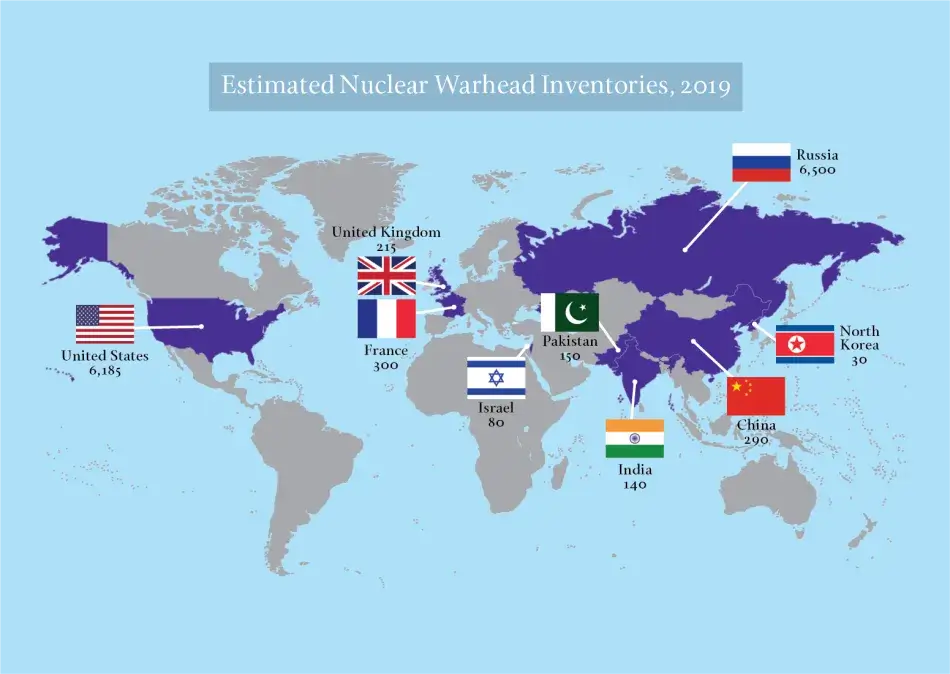
We have entered a new nuclear era. The Cold War world dominated by only two nuclear superpowers no longer exists (even if Russia and the United States still possess the lion’s share of nuclear weapons); it has grown into a multipolar nuclear environment. Five nuclear-armed states–China, India, and Pakistan, in addition to Russia and the United States with its allies Britain and France–now set the contours of a multisided matrix, determine whether and when nuclear weapons will be used, and bear the responsibility for deciding whether and by what means the risk of nuclear war can be averted. Other states with nuclear weapons, such as North Korea, further complicate the picture by creating additional pathways to nuclear conflict and generating U.S. responses that stir Russian and Chinese opposition and counteractions. Israel’s nuclear arsenal, meanwhile, remains recessed and opaque. Thus, U.S. attention, once centered on the prospect of a war between two nuclear hegemons, has shifted to threats associated with the nuclear ambitions of multiple countries and to the possibility of nuclear terrorism.
The Spring 2020 issue of Dædalus, “Meeting the Challenges of a New Nuclear Age,” guest edited by Robert Legvold (Columbia University) and Christopher F. Chyba (Princeton University), builds on the Academy’s long history of studies on arms control. Connected to the Academy’s project on “Meeting the Challenges of the New Nuclear Age,” this volume examines some of the possible escalation pathways that could lead one or more nuclear-weapon states to use nuclear weapons. A collection of fourteen essays authored by a diverse group of security scholars, physicists, statesmen, and political scientists, the issue offers analyses that are sensitive to the challenges and potential dangers posed by a world with nine nuclear players, and considers developments and measures that could alter or mitigate these obstacles and risks.
The essays together highlight five challenges and dangers in today’s more multifarious setting: 1) There are a lot more players. Originally limited to the United States and the Soviet Union, competitive and potentially adversarial nuclear relationships have expanded to include, for example, India and Pakistan, the United States and China, India and China, and the United States and North Korea. 2) Advances in weapons technology, including cyber and artificial intelligence, are making this shifting environment far more complex and dangerous. These advances raise concern over the survivability of nuclear forces, blur the line between conventional and nuclear war-fighting, risk transforming space warfare into an integral part of nuclear warfare, and, in a crisis, potentially decrease decision-making time. 3) Concepts key to understanding the original Cold War nuclear era–such as strategic deterrence and nuclear arms control–are either under stress, collapsing, or undergoing unpredictable change. 4) The already-contested realm of nuclear norms is growing increasingly murky and unsettled. The “nuclear taboo” seems further weakened by the attention given to the development of weapons for limited, and therefore more plausible, nuclear use. And lastly, 5) the pathways to inadvertent nuclear war have multiplied across more regions and relationships.
The result of these conversations in the Dædalus issue is not a comprehensive exploration of all facets of a changing nuclear environment. Rather, the focus is on salient aspects of the changes underway among the major nuclear powers, with a primary emphasis on the United States, Russia, and China. The intent is to capture the essential features of the nuclear world we have entered, and to stimulate among policy-makers and the engaged public a recognition of the challenges that it poses.

“Meeting the Challenges of a New Nuclear Age”
Spring 2020 issue of Dædalus
Conclusion: Strategic Stability & Nuclear War
Christopher F. Chyba & Robert Legvold
“Meeting the Challenges of a New Nuclear Age” is available online at www.amacad.org/daedalus/meeting-challenges-new-nuclear-age. For questions and more information, please contact daedalus@amacad.org.